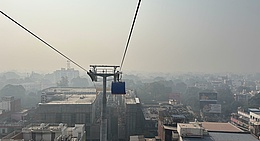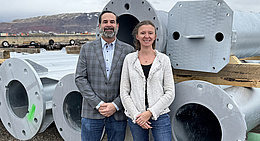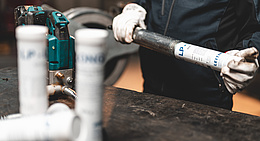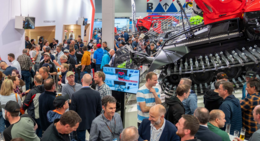In the past, oversizing was often a standard design procedure, but the focus today is on exploiting the potential for maximum efficiency in terms of process technology and economics. The goal of a management committed to economically sustainable solutions must be to identify the product or system that will involve the lowest costs over a given period of time and offer a quick return on investment.
That is why total cost of ownership is now a big issue, comprising not just the direct costs of the initial purchase but also the subsequent costs of operation, maintenance and repair. Known cost drivers as well as hidden costs can thus be identified prior to the investment decision.
In this context, Fatzer AG Drahtseilwerk offers groundbreaking solutions and best practice approaches. In line with the company’s “Meeting your Wishes” philosophy, full account is taken of the operator’s individual needs and requirements in the planning phase already – as the prerequisite for an optimum solution in terms of total cost of ownership.
Best-practice approach I: optimized rope life
Only where the best raw materials are used can the result be a product offering a long service life. On short installations with long operating hours, above-average loads are imposed on the ropes. In such cases, it is good practice to employ a compacted eight-strand rope with a Stabilo core, as that greatly extends the service life of the rope. Rope compaction in combination with the eight-strand construction is the foundation for long rope life. In many cases, however, service-life problems do not relate to the rope itself but are caused by the splice. Extensive tests and useful customer feedback show that the eight-strand Fatzer splice roughly doubles rope life and thus significantly improves system availability. That makes the splice, as the weakest link in the rope, a calculable variable. Eight-strand Fatzer ropes are predominantly used on urban systems with above-average operating hours and bending load cycles such as the London Emirates Cable Car or Marquam Hill Aerial Tram in Portland, with its continuously spliced haul rope.
Another groundbreaking installation is the SATU Oeiras in Portugal, where the Performa rope has so far been subjected to 1.8 million bending load cycles – with zero maintenance. In terms of splice load, this is about four times the splice life of a six-strand rope. That shows the potential of Fatzer’s Performa ropes.
Best-practice approach II: Reducing maintenance costs and increasing system availability
With the TRUlub SR11 basic lubricant introduced in 2012, rope re-greasing is now usually unnecessary. Rope care is reduced to greasing the splice knots. Annual maintenance costs are thus eliminated, as are the risks involved with the rope re-greasing work.
With their low-stretch characteristics, Stabilo ropes offer additional cost savings in the first years of operation already. After a number of years of operation, preventive rope shortening, or splice renewal, can be performed to significantly extend splice life. This frequently obviates, or at least delays, the need for a splice insert.
Best-practice approach III: Reducing follow-up costs and negative effects on the line
In the context of today’s debate on smooth running, a Fatzer Stabilo rope carefully selected for the installation involved is the solution of choice. The six-strand rope offers the optimum relationship between required wire strengths and overall rope diameter.
Following major investments in new machines, continuous improvements have been achieved in the last few years in the precision of the ropes’ roundness and lay lengths – resulting in stranded ropes that are outstanding in terms of quiet running. Where strand-induced vibrations and their consequences (reduced quality of the ride, component fatigue, noise, etc.) can be a problem, the Performa rope is the perfect solution. Thanks to its roundness, strand-induced energy is almost completely eliminated, and sheave wear is greatly reduced. For that reason, Performa ropes are often used on high-speed installations. The popularity of this type of rope for people-movers worldwide is confirmation of the excellence of the product. For Fatzer, it is also an incentive to further intensify research and development in this segment.
Conclusion
In order to be able to assess total life cycle costs, close attention must be paid to a number of parameters when selecting the rope. A long-life product is always a combination of the rope, the splice and connections, and – should any damage occur – the quality of the repair. To that extent, the Fatzer slogan “Meeting your Wishes” can be modified to “Meeting your Needs”.



![[Translate to English:] (c) Doppelmayr](/fileadmin/_processed_/b/3/csm_85-ATW_Stechelberg-Muerren_Lauterbrunnen_CHE_001_6442c0520d.jpg)








